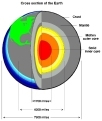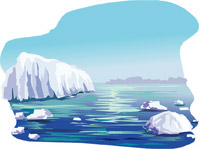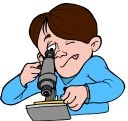
Worksheets and No Prep Teaching Resources
Reading Comprehension Worksheets
Earth

Earth
 Worksheets and No Prep Teaching Resources Reading Comprehension Worksheets Earth |
 Earth |
| edHelper's suggested reading level: | high interest, readability grades 5 to 6 | |
| Flesch-Kincaid grade level: | 5.69 |
|
Isostasy
By Patti Hutchison |

|
 1 As he was taking a bath one day, a mathematician named Archimedes discovered something. He noticed that if you place an object in water, the water level rises. This led to Archimedes' Principle. This principle says that an object applies a force that pushes downward on the liquid. Another force pushes upward on the object that is placed in the fluid. If the object is denser than the fluid, it will sink. If the object is less dense than the fluid, it will float. If an object floats, it will, however, sink lower in the water as more mass is added to it.
1 As he was taking a bath one day, a mathematician named Archimedes discovered something. He noticed that if you place an object in water, the water level rises. This led to Archimedes' Principle. This principle says that an object applies a force that pushes downward on the liquid. Another force pushes upward on the object that is placed in the fluid. If the object is denser than the fluid, it will sink. If the object is less dense than the fluid, it will float. If an object floats, it will, however, sink lower in the water as more mass is added to it. |
Create Weekly Reading Books
Prepare for an entire week at once! |
| Leave your feedback on Isostasy (use this link if you found an error in the story) |
 |
Earth
|
 |
Special Education Science Materials for Teachers
|
 |
Science
|